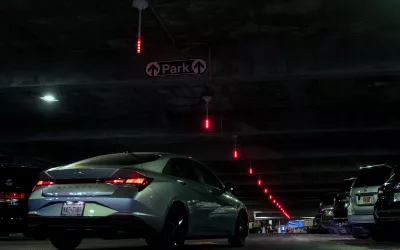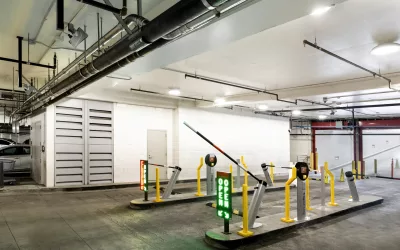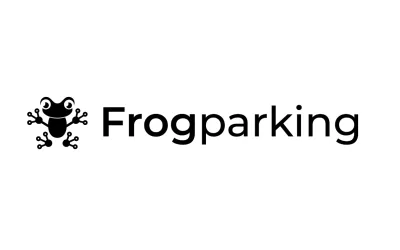When we are talking about city parking solutions and systems, the use of static cameras to detect occupancy across multiple spaces has long been considered a standard approach.
However, as parking technology evolves and innovative parking solutions emerge, it’s becoming increasingly evident that relying solely on camera-based systems can lead to faulty and inaccurate results. At the forefront of this discussion, is the inefficiency and unreliability of static camera parking guidance systems in accurately detecting parking occupancy and providing real-time parking guidance.
I’m not going to beat around the bush here. Static cameras struggle to deliver precise data, leading to misleading occupancy rates and ineffective parking management strategies.
Here are some cold, hard facts to prove this.
A prime example of these shortcomings can be seen at a well-used train station site in Melbourne, Australia. Our parking sensor-based approach clearly outshines a competitor’s camera-based guidance system. Frogparking hosted camera data on our system so there was a single source of truth.
Basically – here is how it goes.
The below black shading below indicates Frogparking parking guidance sensors, and the green shading below indicates a competitor’s camera-based parking guidance system (network of pole-mounted cameras). I’ve removed the street names, to protect our customers privacy, but you can ‘get the gist’ of what is displayed.

Both car parks were known for commuter traffic.
Drivers would arrive, park their vehicles, and get into trains to travel to central Melbourne. This resulted in the area being a key pick-up/drop off at specific times. Further to this, the average user parks for four hours or longer.
Despite both areas experiencing similar commuter traffic, the camera parking system (in the green shaded area) recorded significantly higher occupation rates. Moreover, many of these instances lasting less than 10 minutes. This didn’t make any sense to me, or any of the other data scientists at Frogparking, as we knew the average user was parking for four hours +.
So, we put on our FBI hats, and dug into the data.
Upon analysis, our results showed that the discrepancy is an example of frequent toggling. In other words, basically, unreliable parking data. Further to this, it highlights the limitations of static cameras in providing a clear picture of parking occupancy patterns.
Furthermore, deeper analysis revealed technical issues with the camera system. Undoubtedly during nighttime and sunrise/sunset periods. These ambient light conditions saw accuracy plummet due to technical glitches and offline camera issues. Despite attempts to address these issues, the camera provider struggled to maintain consistent functionality. Moreover, citing reasons such as battery failures and calibration issues.
In contrast, Frogparking’s sensor-based approach at the same location provided a reliable and accurate representation of parking occupancy. Additionally, enabling effective management strategies and enhancing the overall user experience.
Below is the actual data and you can see this for yourself. Frogparking is in black, and the camera system in green.

In conclusion, the reliance on static camera systems for city parking solutions is becoming increasingly outdated and unreliable.
The above simply proves this. Frogparking’s sensor-based solutions offer a more efficient, accurate, and dependable approach to parking management solutions. It ensures optimal utilization of parking spaces and improved user satisfaction. By leveraging cutting-edge technology and real-time data analytics, Frogparking offers a superior alternative technology.
I, personally, reviewed said above data & am more than happy to discuss further with anyone who has any questions.
Until next time,
Dr Tim signing off



